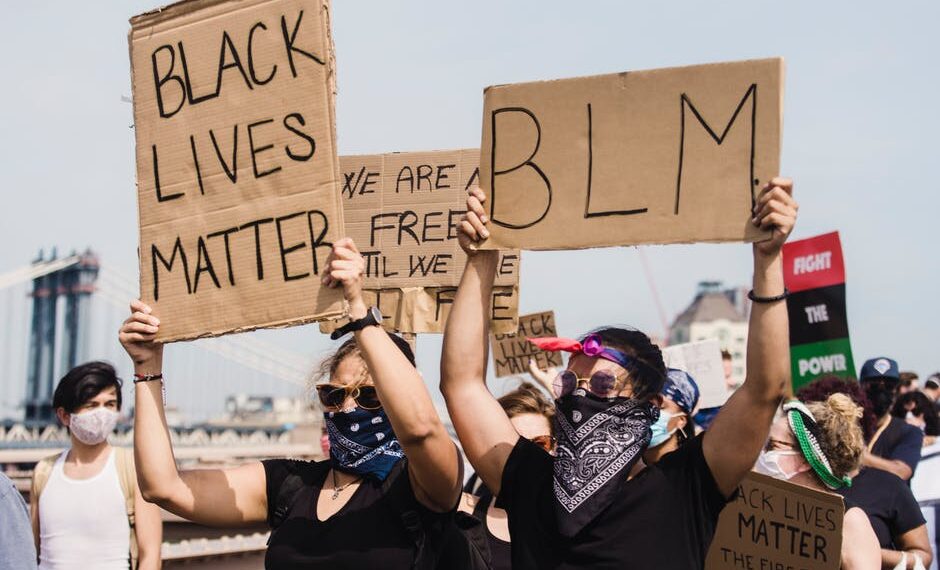On the morning of May 26, 2020, the entire city of Minneapolis woke up to a disturbing video all over their newsfeeds. Soon after, the entire world saw the video and heard the news.
The video showed a black man named George Floyd pinned to the ground. On top of him, a police officer kneeled on his neck for 8 minutes.
The world soon got familiar with George Floyd’s name. And the city of Minneapolis made sure that no one would forget. But what really happened to George Floyd? Continue reading to learn the story behind the riots.
Who Was George Floyd?
George Floyd was born in North Carolina. At age 2, his single mother moved the family to Houston. They lived in a poverty-stricken neighborhood, the Third Ward.
At Jack Yates High School, Floyd was a star tight end for the football team. Standing at 6’7″, his nickname was “Big Friendly” and later “Big Floyd.” His skill on the basketball court got him scouted by South Florida State College in Avon Park, Florida.
Floyd spent 2 years at South Florida State College before spending a year at Texas A&M University. He then returned to Houston to work in construction and security.
Unfortunately, Floyd found trouble with the law in his adulthood. He spent a few months in jail on drug and theft charges. In 2007, Floyd was arrested and charged with aggravated robbery. He pleaded guilty in 2009 and was released on parole in 2013.
Upon his release, Floyd set out to live a better life and provide for his five children from various relationships. In 2014, he moved to Minneapolis in search of a fresh start.
“I Can’t Breathe”
On May 25, 2020, Floyd purchased cigarettes at Cup Foods, a convenience store in South Minneapolis. A store employee believed Floyd used a counterfeit 20 dollar bill, and they called the police.
While Floyd sat in his SUV across the street, officers J. Alexander Kueng and Thomas Lane arrived on the scene. Kueng and Lane told Floyd he was under arrest, and Lane handcuffed him.
A few minutes later, officers Derek Chauvin and Tou Thao arrived on the scene. At this time, Floyd was lying chest down on the pavement, handcuffed.
Chauvin proceeded to kneel on Floyd’s neck. Passersby began to notice and started filming.
For a total of 7 minutes and 46 seconds, Chauvin kneeled on Floyd’s neck. Cell phone videos show George Floyd repeatedly saying, “I can’t breathe,” pleading, and calling out for his mother.
Floyd lost his pulse and was lifted by paramedics into an ambulance while unconscious. About an hour later, he was pronounced dead. George Floyd was 46 years old.
The Aftermath
The next day, Minneapolis broke into protests, demanding justice for George Floyd. People marched in solidarity with the Black Lives Matter movement, calling for the arrest of all 4 officers involved. Not long after, other cities across the country and world gathered in protest as well.
While the large majority of the protests in Minneapolis were peaceful, civil unrest broke out the following nights after Floyd’s death. Minneapolis saw shattered windows, looted stores, and buildings set on fire.
Military forces were called in, and a nightly curfew was instilled. Protestors were often met with tear gas and rubber bullets.
On May 29, 4 days after Floyd’s murder, Officer Derek Chauvin was arrested and charged with third-degree murder and second-degree manslaughter. Soon after, Chauvin’s wife Kellie filed for divorce. As www.eurweb.com shares, she was devastated.
Later, Chauvin’s charge increased to second-degree murder. The other 3 officers were charged with aiding and abetting second-degree murder.
A Legacy Left Behind
While many people only heard of the riots and destruction in Minneapolis, the city also filled itself with commemorative art and a memorial for George Floyd.
While George Floyd’s death was tragic, Minneapolis is making sure to keep his memory alive. One way is by the George Floyd Legacy Scholarship, established by the Minnesota Vikings in Floyd’s honor.
For more news, entertainment, and health stories, read through the articles on our blog.

